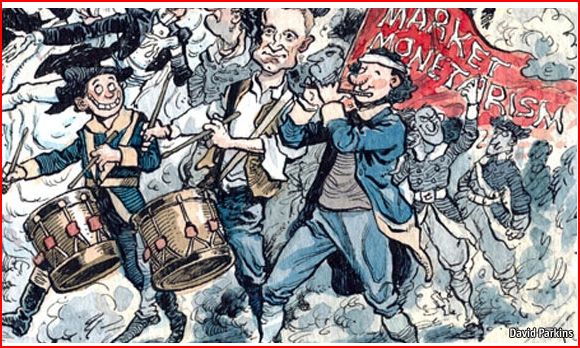12 drummers drumming
A few days ago I discussed a long article on blogging in The Economist. It turns out that the same edition also has a shorter piece (I presume it’s one of the short lead articles, which they often develop further in the middle of the magazine.)
Here’s an excerpt:
Previous publishing revolutions, such as the advent of printing, prompted similar concerns about trivialisation and extremism. But whatever you think about the impact of blogging on political, scientific or religious debate, it is hard to argue that the internet has cheapened the global conversation about economics. On the contrary, it has improved it.
Research (by two blogging economists at the World Bank) suggests that academic papers cited by bloggers are far more likely to be downloaded. Blogging economists are regarded more highly than non-bloggers with the same publishing record. Blogs have given ideas that failed to prosper in the academic marketplace, such as the “Austrian” theory of the business cycle, another airing (see article). They have also given voice to once-obscure scholars advancing bold solutions to America’s economic funk and Europe’s self-inflicted crisis.
A good example is Scott Sumner of Bentley University, who believes that America’s Federal Reserve should promise to restore “nominal” GDP (as opposed to “real” GDP, which takes account of inflation) to its pre-crisis path.
. . .
The back-and-forth between bloggers resembles the informal chats, in university hallways and coffee rooms, that have always stimulated economic research, argues Paul Krugman, a Nobel-prizewinning economist who blogs at the New York Times. But moving the conversation online means that far more people can take part. Admittedly, for every lost prophet there is a crank who is simply lost. Yet despite the low barriers to entry, blogs do impose some intellectual standards. Errors of fact or logic are spotted, ridiculed and corrected. Areas of disagreement are highlighted and sometimes even narrowed. Some of the best contributors do not even have blogs of their own, serving instead as referees, leaving thoughtful comments on other people’s sites and often criss-crossing party lines.
At the top of the on-line article is this close-up of the bigger illustration provided in the longer article.
Because I’m so vain my family was curious, I asked the artist if I was supposed to be the drummer. Yep, it’s me. Bob Murphy and Warren Mosler are also so honored. I never expected my picture to appear twice in my favorite magazine; and in caricature no less.
It makes me feel guilty to be singled out, so here are 12 other drummers that might have been included:
David Beckworth, Niklas Blanchard, Lars Christensen, David Eagle, David Glasner, Josh Hendrickson, Robert Hetzel, Doug Irwin, Kantoos, Marcus Nunes, Nick Rowe, Bill Woolsey. I consider Hetzel to be the most distinguished market monetarist, although because he’s at the Fed he might not be comfortable with that label.
I’m being sent so much interesting stuff that it’s hard to keep up. I hope to do posts soon on David Eagle and William Barnett, who have sent me material that relates to market monetarism.
PS. The artist didn’t say which drummer; I’m hoping it’s not the one on the left.
PPS. I apologize to any market monetarists if I left your name off the list; I wanted to stay at 12 for obvious reasons.
Update: My wife says the caricature looks much better than me.


